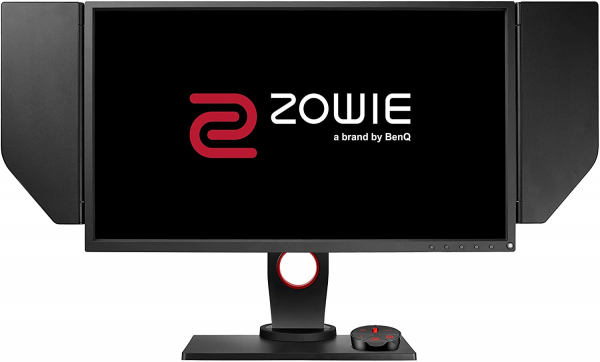BenQ
BenQ Zowie XL2540, the first 240 Hz monitor
Aprox. 448€
See specificationsThe BenQ Zowie XL2540 is the first monitor on the market to offer a refresh rate of 240 Hz and therefore be able to display up to 240 images per second sent by the graphics card.
Positive points
The best afterglow time measured at the lab.
240 Hz frequency.
Ergonomics.
Finish.
Wired remote control.
Connectivity.
Bad points
No backlight scanning (ULMB).
Fidelity of the perfectible image.
Our review
Presentation
This monitor has a 24.5 inch TN panel displaying a Full HD definition of 1,920 x 1,080 px. The manufacturer announces a response time (gray to gray) of 1 ms, a maximum brightness of 400 cd / m² and a contrast of 1000: 1. The BenQ Zowie XL2540 sets itself apart from the competition by integrating a wired remote control to access the various settings and a screen to isolate the player from what is happening behind the screen.
This monitor ignores G-Sync and FreeSync technologies to focus on the native refresh rate compatible with all graphics cards, regardless of the manufacturer of the graphics processor.
The BenQ Zowie XL2540 monitor is sold for around € 550. It's quite expensive for a 25-inch monitor limited to Full HD definition, but it's the price you pay to go up to 240 Hz - a rate that only high-end graphics cards can come and tickle. In comparison, the Asus PG278Q, equipped with a TN 144 Hz panel, but in 27 inch QHD, is sold for just under 700 € and the Acer Z271 (27 inch, Full HD, G-Sync, 144 Hz) is sold for less than € 550.
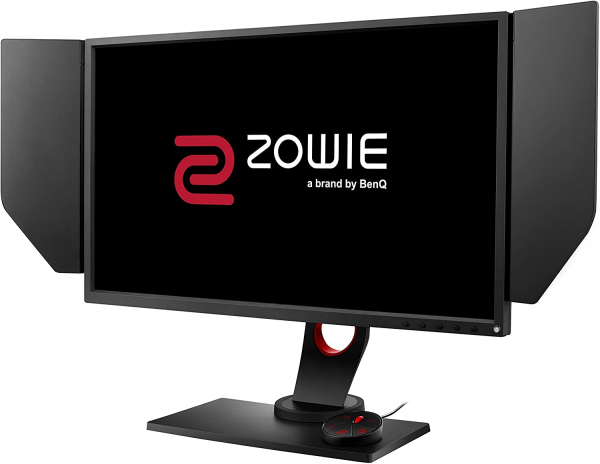
Ergonomics
BenQ opted for good quality matt anthracite gray plastic. The whole is sober and quite versatile. The touch of red recalls the gamer side of this model. The most striking element obviously remains the screens on each side of the screen which allow the player to stay focused on the game. This accessory is designed for playing in public, especially on stage, but ultimately has little of interest at home, apart from using it as blinders to avoid reflections linked to direct light sources, for example. The coating of the slab is also completely matt and the screen does not suffer from reflections at all.
The foot is rotatable by ± 45 °, its base is marked with a mark allowing to perfectly find the central position of the screen.
The foot is adjustable in height by 14 cm. The inclination is adjustable between -5 ° and + 20 °. The panel also switches to portrait mode (pivot). The various adjustments are made in a fluid way, without any squeaking, which is a guarantee of quality. BenQ has also placed a mark on the height adjustment in order to memorize its favorite height.
The rear of the monitor is neat and remains just as sober as the front, with one exception: the central part is in shiny plastic. The connectors are located under the screen and the opening at the base of the stand serves as a cable management system.
The connectors are distributed in two places. On the back, there is a DisplayPort input, two HDMI inputs (including an HDMI 2.0), a DVI input and an audio input. On the side are two USB 2.0 ports, a headphone output and a microphone input. There are no speakers on the screen.
Above the two USB 3.0 ports, a retractable arm allows careful storage of headphones; a very good idea since taken up by other manufacturers.
The monitor is supplied with a protective PVC cover (reminiscent of plastic swimming pool material) which protects the monitor from dust but not from impact. Care should therefore be taken during transport.
The six buttons at the bottom right of the screen allow you to turn on the monitor and access the various shortcuts, but the remote control is much more practical for navigating the menus. The click wheel is very pleasant to use. It is possible to adjust brightness, contrast, temperature, sharpness, gamma, overdrive, blue light filter, source, OSD position, Black Egalizer, etc. Keys 1, 2 and 3 are used to quickly access three predefined settings.
By lowering the brightness to 29 to obtain a white at 150 cd / m², the BenQ XL2540 monitor consumes 17 watts, ie a very reduced relative consumption of 77 W / m², far below the average of the monitors tested (100 W / m²) .
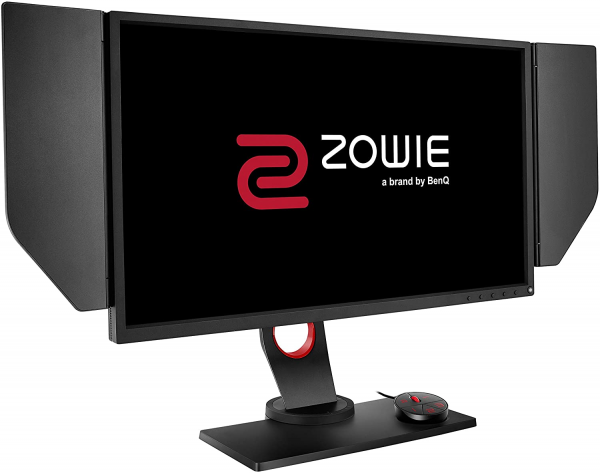
Colors and contrast
Default: average gray temperature: 7.620 K
Default: gamma curve at 1.7
Default: Average Delta E at 9.6
By default, the BenQ Zowie XL2540 monitor is set to FPS 1 mode which does not do much in fidelity. The gamma curve is thus completely fanciful with an average of 1.7, far from the reference 2.2. In fact, BenQ wants to unblock the blacks here - the latter are then completely washed out - in order to better see the potential enemies in a game. The temperature is fairly stable across the spectrum, but the rendering is too cold (7,620 K). Delta E - difference between the colors requested and the colors displayed - measured at 9.6 results in colors that are not very faithful. Only light gray and magenta are below a delta E of 3 below which the eye no longer perceives the difference. Out of the box, the rendering is very typed gaming.
Manual adjustment: average gray temperature: 6,200 K
Manual adjustment: gamma curve at 2.2
Manual setting: Delta E medium to 3.5
Switching to the "standard" profile fortunately allows to correct the shot. After having reduced the brightness to 28, set the gamma to gamma 3 and the temperature to hot to obtain a white close to 150 cd / m², the image is approaching current standards. The temperature curve remains the same, but the average drops to 6,200 K, much closer to the 6,500 K reference. The gamma curve is a little more stable, but there is a drop in the light gray that we have not managed to correct, even by disabling the Black Egalizer. The average still stands at 2.2, but the blacks are then too clogged and the light grays overexposed. The colors are a little more faithful with an average delta E at 3.5.
Calibrated: average gray temperature: 6.830 K
Calibrated: gamma curve at 2.2
Calibrated: Delta E medium at 1.8
Calibrating the monitor with an ICC profile is beneficial since the temperature and gamma curves are stable. On the other hand, we did not manage to correct the small defect of gamma on the light gray. The average gamma remains perfect (2.2) while the average temperature drops to 5,900 K. The colors can now be considered perfect with an average delta E at 1.4. This color profile is available on Focus Numérique.
The TN panel clearly sins by its lack of contrast, because it does not exceed 840: 1, while some TN monitors approach the 1000: 1. In all cases, this remains very far from the contrast offered by VA panels, whose best representatives ( Eizo Fortis FG2421 and BenQ BL2410PT) exceed 3,000: 1.
The average difference in uniformity is only 8% over the entire 25-inch panel and we did not find any light leaks or clouding. Unfortunately, the viewing angles are not flattering: we can for example observe a vertical gradient on a background that should be solid.
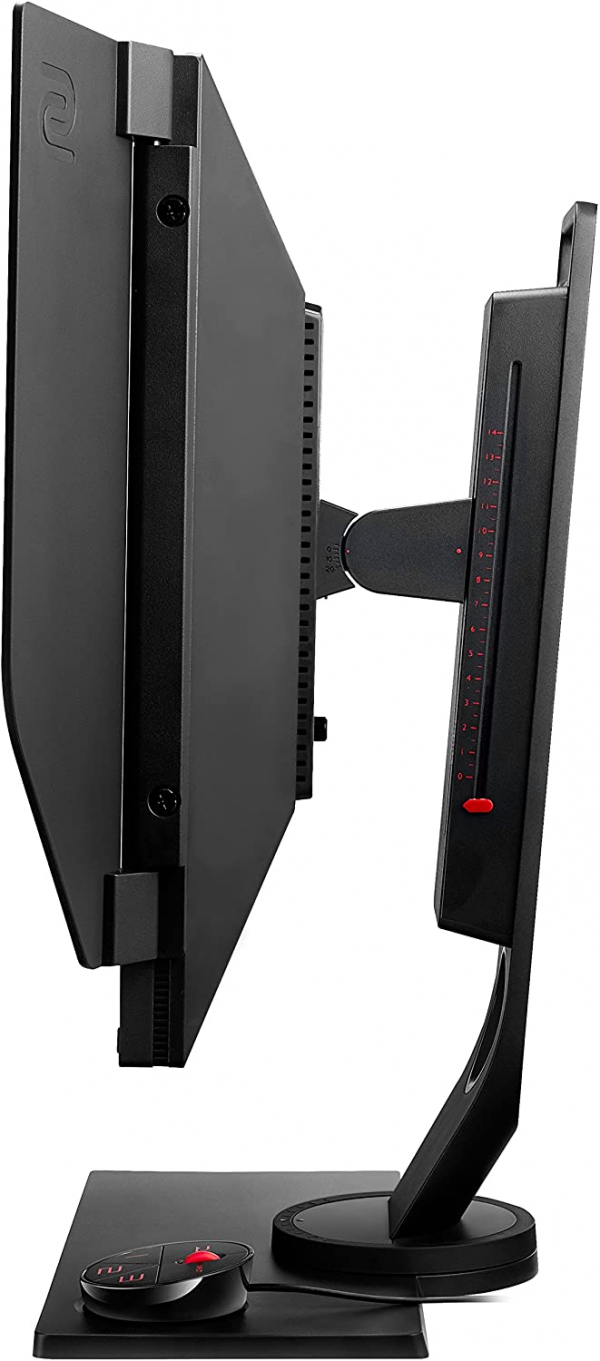
Reactivity
The BenQ Zowie XL2540 does not use Pulse Width Modulation (PWM) to adjust the power of the backlight and therefore the brightness. This modulation usually varies the intensity of the LEDs cyclically; a phenomenon that is perceived as flicker by some sensitive people. In some rare cases, this modulation can induce eyestrain and headaches. So there is no such problem with this monitor.
By default, the overdrive (called AMA for Advanced Motion Accelerator at BenQ) is set to Extreme. Setting to the fastest mode (Premium) allows the best afterglow time to be obtained without ghosting effect. We measured this remanence time at 3.5 ms. It is simply the best afterglow time ever recorded in our laboratory and above all it allows the screen to actually display a little more than 280 images per second. Our 1,000 images per second camera lets you see the difference between 60 Hz, 120 Hz and 240 Hz mode. The latter displays twice as many images per second. Finally, we measured the delay in the display (input lag) at 13.5 ms. There is almost no lag between the source and the monitor, but this model does slightly worse than other gaming monitors that do not exceed 10 ms.
Finally, it should be noted that this monitor does not have a backlight scanning system which could nevertheless prove to be very effective on a 240 Hz panel to improve the sharpness of moving objects.
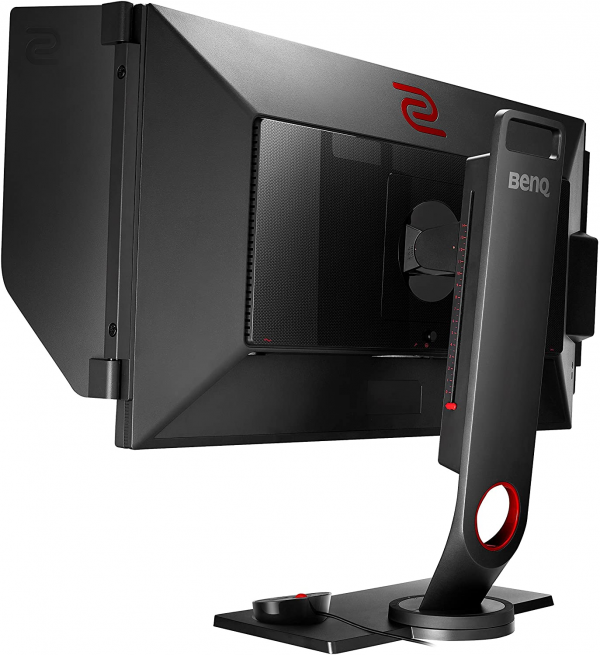
Conclusion
Its lack of fidelity in rendering the image cost it its fifth star, but the BenQ Zowie XL2540 is nonetheless an excellent monitor made for competitive play. Its extraordinary refresh rate and its reactivation allow it to actually display 240 frames per second, which will undoubtedly be a criterion of choice for the most demanding players. Add flawless ergonomics and quality finishes, the BenQ XL2540 is clearly a new benchmark for the game.
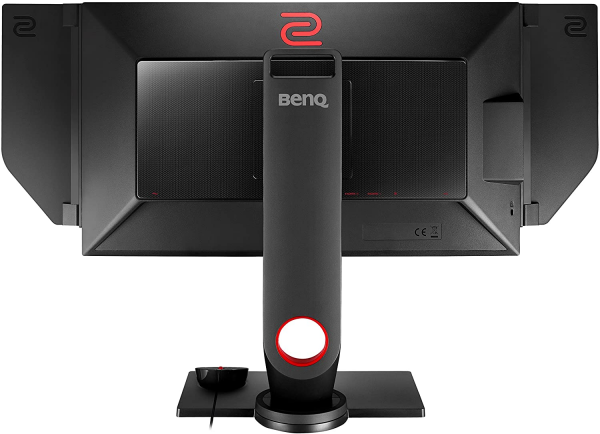
Specifications

